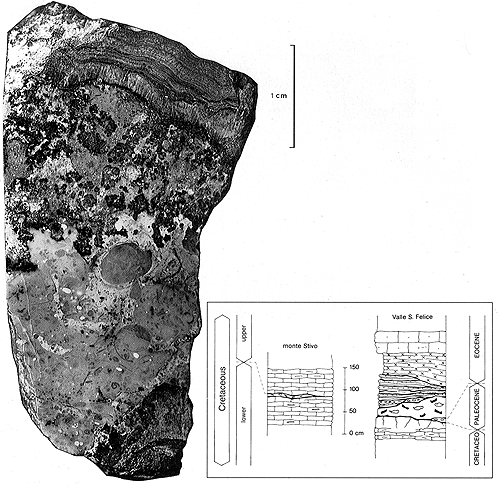
Hardground structure
Plate 169

Hardground structure
Plate 169
A hardground is a submarine crust of indurated sediment, in practice, a horizon that has been lithified before burial, or pre-consolidated. Its structure is a compound of duricrust and nodular structures. A hardground is, therefore, a complex object, and various processes contribute to its formation: dissolution and reprecipitation of calcium carbonate, precipitation of iron and manganese oxides, biological activity of boring organisms, etc. They can operate if a basic requirement is met: very slow or no sedimentation. This condition is provided in pelagic environments (open sea, far from land influences), when organic productivity is drastically reduced (the hard parts of dead plankton raining from the surface waters represent the main contribution to sedimentation) or currents rich in CO2 sweep and corrode the bottom.
Given these circumstances, hardgrounds are indicators of stratigraphic gaps (hiatuses) and discontinuities. Examples are familiar in Mesozoic and Early Tertiary carbonate formations of the Tethys (Mediterranean-Alpine) area. Plate 169 shows one of them, in the Upper Cretaceous Scaglia Formation of southern Alps.2
A magnified polished section is here placed in upright stratigraphic position. An outer crust, made of several bands or laminae as in speleothems and continental duricrusts (see plate 162), caps a mottled zone where remnants of the original sediment (lighter patches) intermingle with nodules of phosphate and metal-rich precipitates. The unaltered sediment, a micritic, porcellanaceous limestone, appears in the lower part of the section. It contains abundant fossil shells, concentrated by selective dissolution of sediment.
Note 2: A. Castellarin, F. Frascari, and M. Del Monte. 1974. Cosmic fallout in the "hard grounds" of the Venetian Region. Giornale di Geologia 39: 333-346. Back.